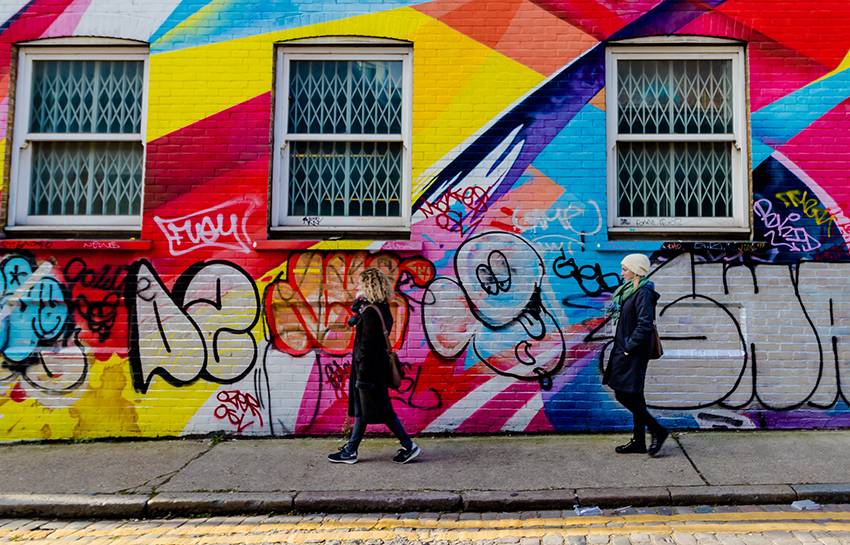Katariina Kiviluoto & Marjukka Parkkinen
The fourth and final part of the STYLE webinar addressed different types of cultural, psychological and socio-economic aspects standing in the way of increased physical activity and healthy mobility. Panellists Mette Granberg (Transport Planner, Helsinki Regional Transport Authority, Finland), John Thøgersen (Professor, Department of Management Aarhus University, Denmark) and Dr Thiago Hérick de Sá (Technical officer, World Health organisation WHO, SUI) reflected on aspects supporting and hindering active mobility as well as solutions for reducing private car use. Addressed topics included, for example opportunities related to new urban transport solutions (e.g. e-scooters, MaaS and multimodality), attitudes and emotions associated with physical activity and active transport as well as elements related to equality, justice and socio-economic factors.
According to Granberg, the potential of new transport solutions for persuading people to step out of their comfortable private cars is relatively modest. For example, e-scooter users in the Helsinki metropolitan area use these gadgets mainly to replace walking trips. Still new gadgets such as e-scooters should definitely be a part of the urban mobility palette, argued Granberg. As is generally the case with new technical innovations, e-scooters are controversial, and there are many open questions related to their safety and health benefits. The same applies for MaaS, which has been hailed as the panacea for our mobility problems. According to Granberg, MaaS could well decrease car use by minimising car ownership, if successfully implemented. However, there are many issues to be solved before we can reap the benefits of MaaS. Indeed, e-scooters and MaaS are good examples in demonstrating that no silver bullets to solve current urban mobility challenges exist. Designing urban spaces for people should be our main planning focus: most people just want their living environments to fulfil their needs. Nonetheless, even though there is no ultimate solution, having good infrastructure is the closest we have to a miracle cure, argued Granberg.
The next issue considered the relationship between emotional factors and physical activity. It is difficult to increase e.g. sustainable mobility, if moving in general is perceived as unpleasant or completely out of one’s comfort zone. Professor John Thøgersen tends to agree that emotional factors play a role in changing lifestyles over a long time period, although infrastructure is even more important. Physical activity can be unpleasant and cycling is not necessarily considered fun by everyone. For some, it is scary or frustrating, said Thøgersen: “The question is, what can we do about it.” According to Thøgersen, it is necessary to provide opportunities for people to try active transport modes and gain positive and rewarding experiences by doing so. In addition, education plays a big role in supporting sustainable mobility. The role of media and representations was also addressed. If, for example, a cyclist is portrayed as a young, fit male with the newest gear in the media, can the image become alienating? Professor Thøgersen says that according to research, media portrayals have more impact on those with less experience. In Denmark and Finland for example, many have cycled or walked themselves, and they are less prone to be influenced by media representations. Instead, the role models are found nearer. Social networks both at home and at work are more influential than media, says Thøgersen.
The last challenge discussed in the webinar was social exclusion and the ways in which the prospects for a more active lifestyle may not be equal for all. Dr Thiago Hérick de Sá reminded that there is no single relationship between socio-economic status and physical activity. Rather, socio-economic factors influence moving in a domain-specific manner. For example, a higher socio-economic status means that a person is more likely physically active in leisure time, but less likely at work or in the household. What follows from different types of relationships is that strategies in promoting physical activity must differ, too.
According to Dr de Sá, the four main factors from the Global Action Plan on Physical Activity 2018–2030 report by WHO apply across the different domains. The task of creating an active society means that social norms and attitudes have to be tackled through different strategies in order to reinforce positive social development and remove the barriers that prevent people from being more active. Secondly, active environments have the power not only to enhance but also to preserve and protect walking and cycling that already is done. De Sá pointed out that in many parts of the globe walking and cycling are less of a choice and more of a need and the only alternative available. Safe infrastructure also supports equality. For instance, women may be more concerned of their safety and avoid walking at night. The third aspect to consider are the active people. A lot of attention is paid on individuals, but it is crucial to create and enable an environment that supports and enables healthy and easy choices. Finally, governance mechanisms and policy enablers need to promote physical activity in all domains, make it safe and pleasant and address health inequities in all contexts, concludes de Sá.
This is the fourth and final blog post about the STYLE webinar. Links to other posts are below:
- STYLE webinar blog #1: Promoting healthy mobility with knowledge and decision-making
- STYLE webinar blog #2: Design to support physical activity
- STYLE webinar blog #3: Integrating physical activity to everyday lives
Further information, recording and slides from the webinar here.
Photo: Jonathan Kho at Unsplash


3 thoughts on “Silver bullets, lifestyles, feelings and equality enabling physical activity (STYLE webinar blog #4)”